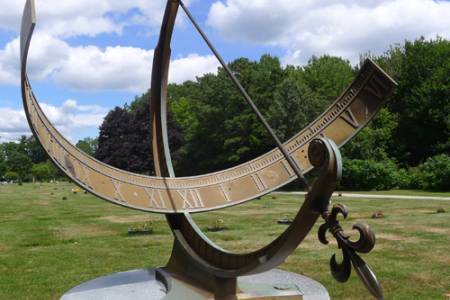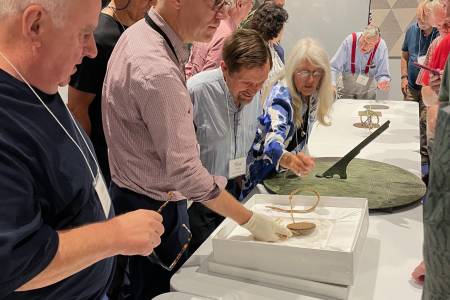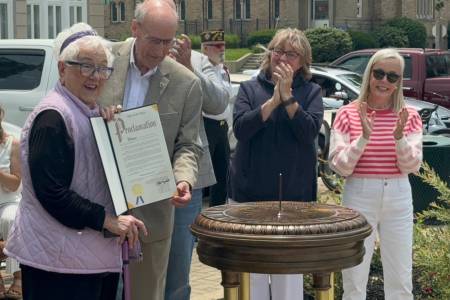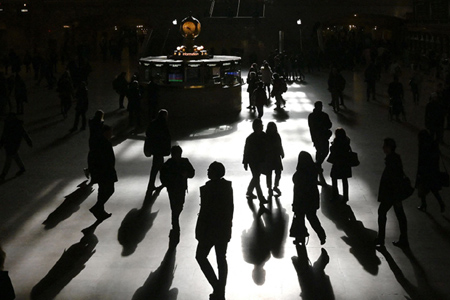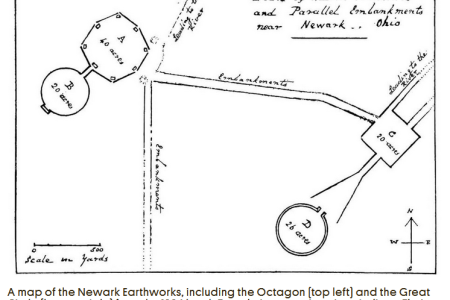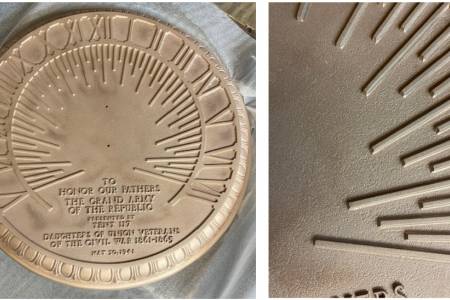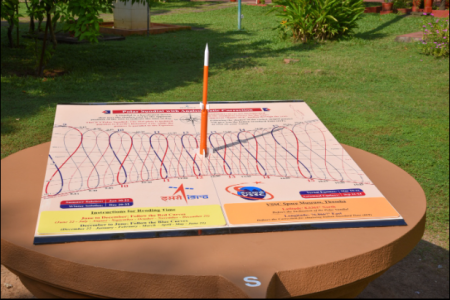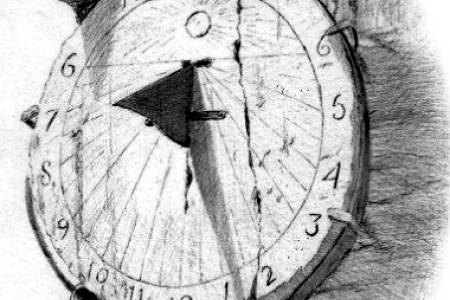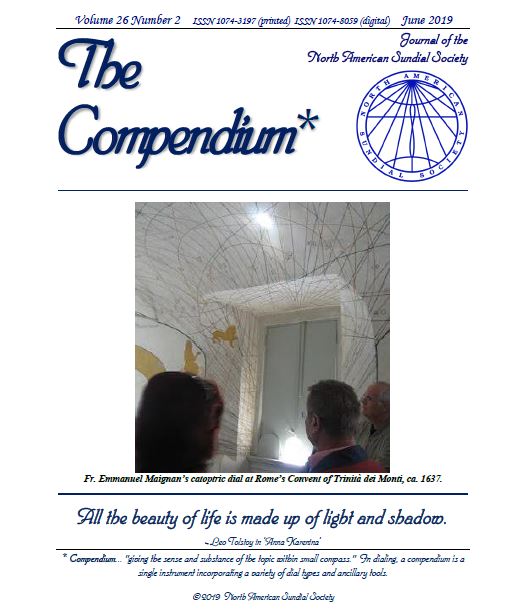 The June 2019 issue of The Compendium as usual begins with a "Sundials for Starters" that looks at the sun during the moments of sunrise and sunset, particularly the phenomenon of the Green Flash. What time is sunset anyway? Read and find out.
The June 2019 issue of The Compendium as usual begins with a "Sundials for Starters" that looks at the sun during the moments of sunrise and sunset, particularly the phenomenon of the Green Flash. What time is sunset anyway? Read and find out.
Robert Adzema presents an article on his design, fabrication, and installation of the "Van Vleck Observatory Sundial - My Design Process". Robert relates "William Herbst, the senior astronomer at Wesleyan, was my principal guide along with his colleagues, in determining the functions that the sundial would provide. He wanted a dial that was not too complicated and that would serve as an educational tool for the students..... 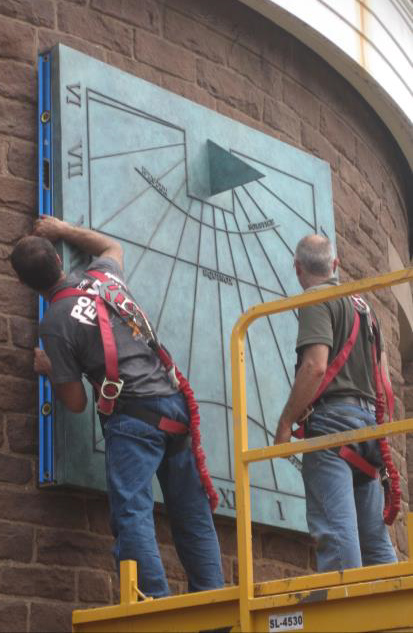 We agreed on a design for a 6′ × 6′ square vertical south dial.... I researched other vertical south dials on the web and kept coming back to the Queens’ College dial in Cambridge, England. It is a beautiful dial, but has too many functions and layers for easy reading. What I found striking and used was the layout of the border and the Roman hour numbers that take their shape from their corresponding hour angles." Read along with Robert to see how a professional dialist designs a beautiful dial and finds the occasional hazards in building it. And of course, "To install the sundial, we used an all-terrain scissor lift to lift and maneuver the dial into position."
We agreed on a design for a 6′ × 6′ square vertical south dial.... I researched other vertical south dials on the web and kept coming back to the Queens’ College dial in Cambridge, England. It is a beautiful dial, but has too many functions and layers for easy reading. What I found striking and used was the layout of the border and the Roman hour numbers that take their shape from their corresponding hour angles." Read along with Robert to see how a professional dialist designs a beautiful dial and finds the occasional hazards in building it. And of course, "To install the sundial, we used an all-terrain scissor lift to lift and maneuver the dial into position."
Then join Mark Montgomery article about the "Tres Riches Heures" with his examination of the Duc de Berry's Book of Hours, a famous prayer book for the Catholic layman of the Middle Ages and art connoisseurs of today. "During daylight hours, monks used mass dials to determine the time to start prayers. Mass dials were seasonal (unequal) hour sundials with Terce, Sext, and None usually marked by extra thick hour lines or crosses on the prayer hours.... To keep track of saint's days and other feasts, most of the books of hours begin with a calendar. 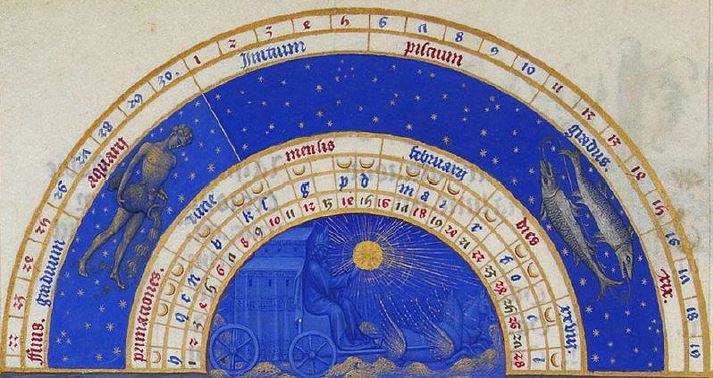 One page for each month listed all of the holy days. The most important feast days were marked in red; hence ... red letter days."
One page for each month listed all of the holy days. The most important feast days were marked in red; hence ... red letter days."
The topic of sunrise and sunset comes up again, this time in Steve Lelievre's article "An Hours to Sunset, Solar Declining Dial using a Mirror in a Box". Steve describes the dial thus: "A ray of light entering a small hole in the vellum is reflected by the mirror onto the reverse side of the vellum. Because the vellum is translucent, the position of the reflected spot is easily seen amid the dial face drawn on the vellum." Steve provides the appropriate mathematics for anyone to construct a similar dial for their latitude in five easy equations.
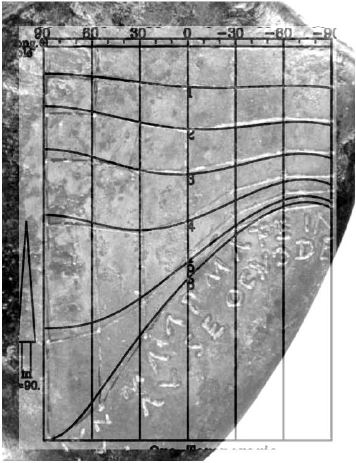 A most interesting historical dial is written in an article by Gianni Ferrari who died in March 2019. It is "The Roman Sundial known as the Ham of Portici". The Ham dial, made of silver-plated bronze, had in some ways the same principles of theSteve's Mirror Box sundial, "It is a portable dial with a fixed stylus, showing the ancient temporal hours. Time was read by turning the instrument, while suspended, to bring the shadow of the extreme point of the tail to the vertical line corresponding to the date of observation day." One read the time along that vertical line. What is fascinating is the number of drawings of this dial since its discovery in 1755. Only several of a dozen drawings accurately portrayed the sundial markings. Gianni presents the mathematical equations for analyzing this small dial. In further issues of The Compendium Fred Sawyer presents with clarity the mathematics for a whole range of these sundials including the ability to read civil (clock) time.
A most interesting historical dial is written in an article by Gianni Ferrari who died in March 2019. It is "The Roman Sundial known as the Ham of Portici". The Ham dial, made of silver-plated bronze, had in some ways the same principles of theSteve's Mirror Box sundial, "It is a portable dial with a fixed stylus, showing the ancient temporal hours. Time was read by turning the instrument, while suspended, to bring the shadow of the extreme point of the tail to the vertical line corresponding to the date of observation day." One read the time along that vertical line. What is fascinating is the number of drawings of this dial since its discovery in 1755. Only several of a dozen drawings accurately portrayed the sundial markings. Gianni presents the mathematical equations for analyzing this small dial. In further issues of The Compendium Fred Sawyer presents with clarity the mathematics for a whole range of these sundials including the ability to read civil (clock) time.
Read about these adventures in history, art, and mathematics and how they all converge in telling time with sundials. Join the North American Sundial Society today. DOWNLOAD FOR FREE


